“Make Meadows, Not Lawns!”
The Lawn: That perfectly green and manicured palette of Kentucky Bluegrass, was a signature of the American Dream. Neighbours could see that you had “made it” when your affairs were so in order that you had extra mental and financial bandwidth to extend the beauty of your home right to the front sidewalk. Over time, the well-kept lawn started losing its importance as a status symbol or a statement of success. Soon, an unkempt lawn became more about how the neighbourhood was affected, downgrading curb-appeal and decreasing property values. Even people who moved away from grass plains to more wild growth meadow-like yards succumbed to scorn from the community for the growing of “weeds”, even to the extent of having the bylaw police called in to enforce conformity.
Thankfully, we are in a new and emerging eco-cultural time. As more of us understand the value of biodiversity and our role in ecological environments, we are beginning to see our lawns for what they are: mundane and homogeneous, a classic monoculture. Indeed, droughts and forest fires are already challenging the realism of the “ideal lawn” on the west coast.
“Make meadows, not lawns”–a nod to the fact that the lawn is a reductionist analogy of what might have been a meadow ecosystem–is a movement that encapsulates these sentiments, and a catch phrase for considering more socially, ecologically, and aesthetically inspired alternatives to lawns. We had the absolute pleasure of helping three clients make the lawn-to-meadow transition last year.
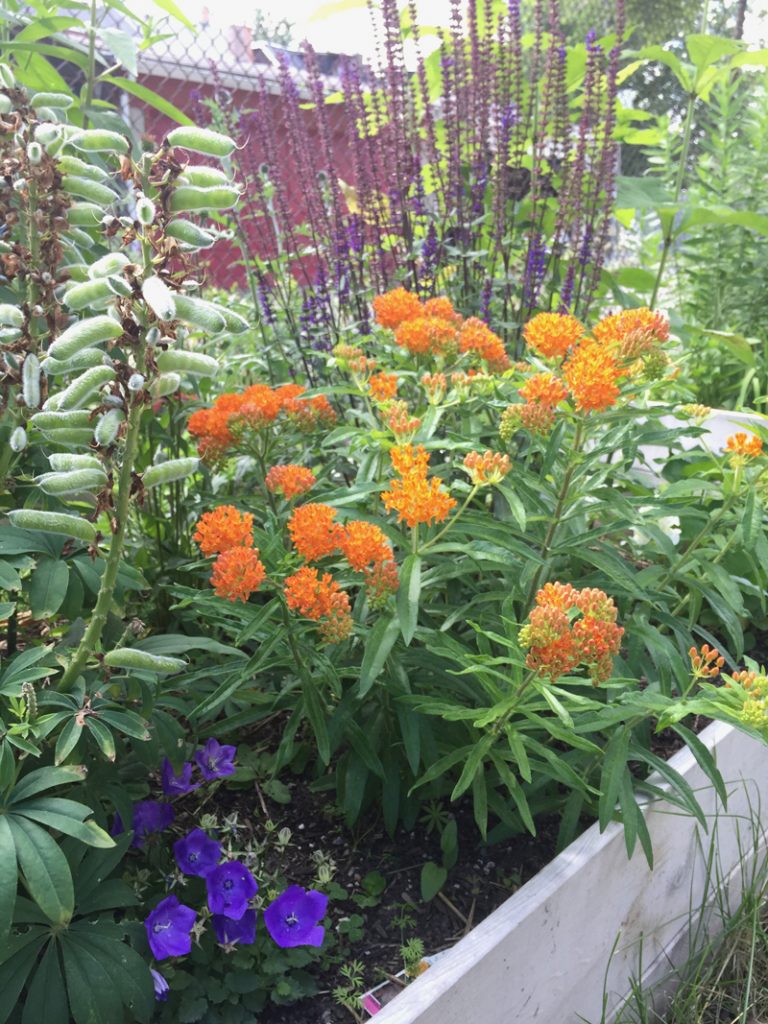
Sanj and Mekalai
When Sanj and Mekalai approached us with a desire to nurture their children’s existing love of nature, we were thrilled to help. Designing with the kids in mind proved to yield some unique challenges, but we think the garden was ultimately better for it.
The blue spruce in front of the porch was the most divisive element in the design. The tree was planted too close to the house, grew too big, was obstructing access to the front door and the sightlines from both the ground and second floor of the house. If left unchecked, its roots would compromise the foundation of the house. However, it had sentimental value because the kids grew up with this being “their” tree, and further complicating the situation, the blue spruce housed a bird’s nest with babies! Sanj and Mekalai considered removing the tree later, when the kids had grown up a bit, but the tree would have also grown and become even more difficult to remove, which might then require additional design work. As nature dictated, the baby birds had flown the coop before the landscaping was started. After consulting an arborist, the family agreed to cut off all the branches, leaving the trunk as a design feature for the kids to decorate.
As for the path, we also went through several iterations of a path that meanders through the front yard and provides access to a berry patch and herb garden before landing at the front porch, where, as Mekalai excitedly noted was, “EXACTLY where our daughter jumps off the porch and runs around!”
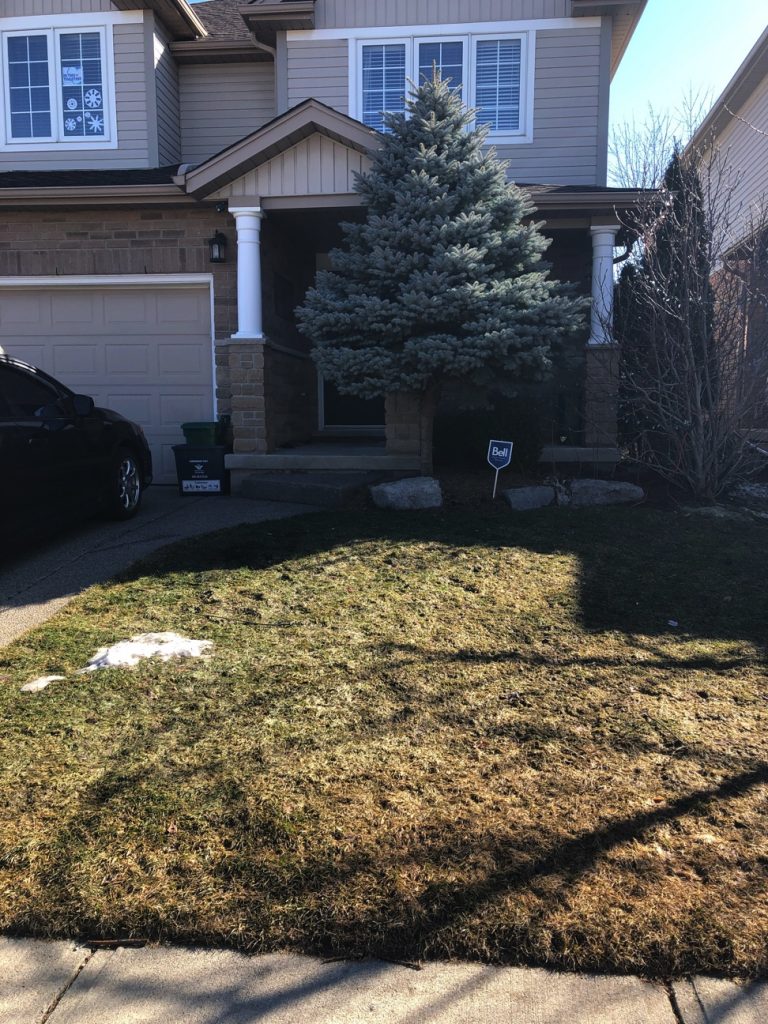
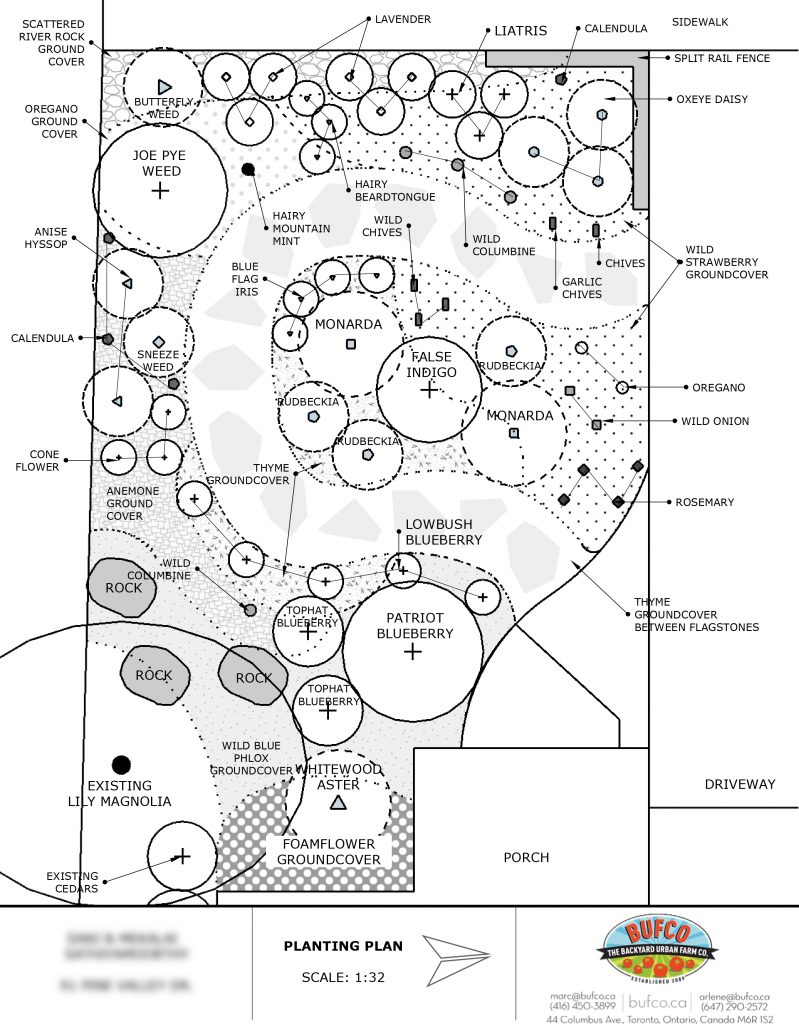
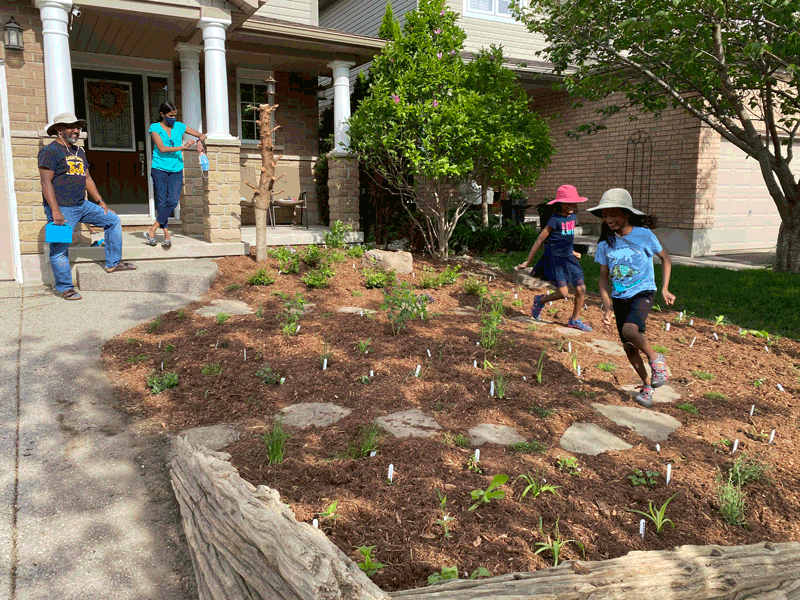
Finally, Sanj and Mekalai wanted a low fence or barrier separating their yard from their neighbours’, whose children had traditionally ventured across the property lines, as kids, like nature, are not constrained by invisible lines. Sanj and Mekalai were concerned that the neighbour’s kids would damage the new baby plants we were about to plant. However, in a suburban environment with few front yard fences, we felt a physical barrier might be a disruptive aesthetic. Instead, we agreed to create a border of river rock from the existing landscaping, add a rustic split rail fence in the front to protect plantings, and contribute to the natural aesthetic they were hoping to achieve.
We could not be more thrilled with this kid-led landscape design. It was amazing to see how Sanj and Mekalai’s children were so interested throughout the entire design process and how the family came to decisions democratically. We jump at every opportunity to get children involved in the garden, especially those who feel so at home in nature!
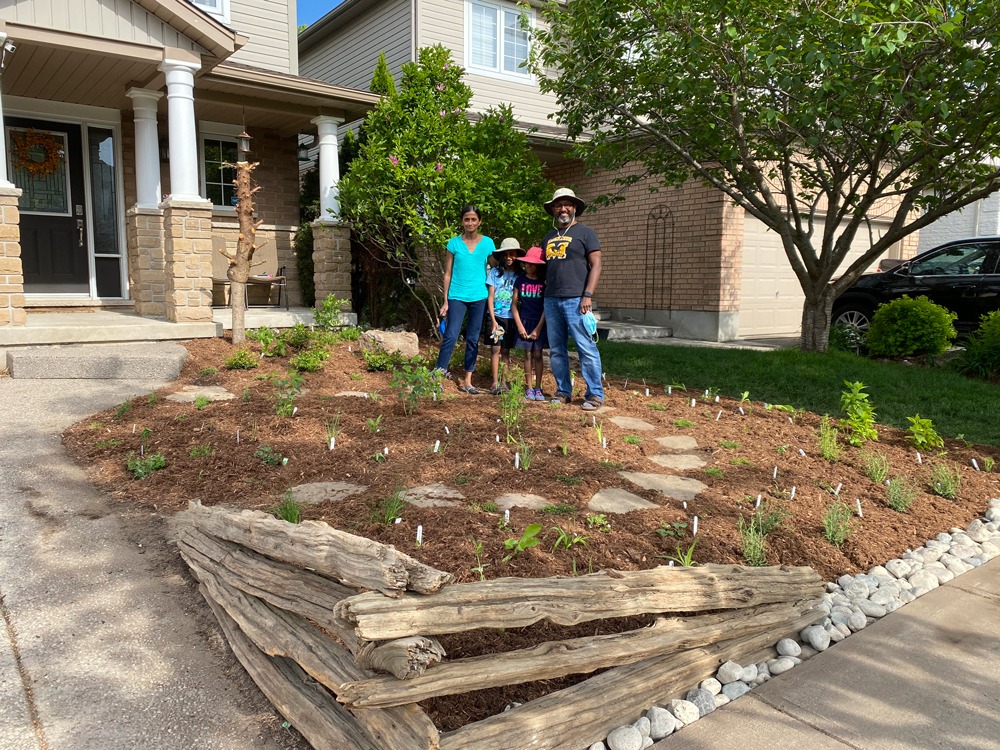
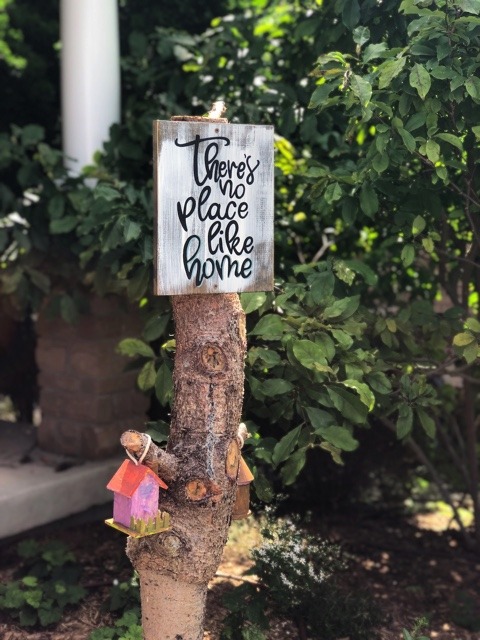
Stuart and Stephanie
Stuart and Stephanie loved the joy that growing vegetables brought their family. However, their backyard was quite shady and running out of growing space, so it was only logical that they move their vegetable growing to their more spacious and very sunny front yard. Plus, a front-yard food garden would provide them the opportunity to harvest fresh herbs for dinner on the way in from the driveway. To soften the look of raised vegetable beds in the front yard as well as attract pollinators to the vegetables, we designed a native perennial garden around a Square Post Series raised bed that can be passively irrigated by water collected in a rain barrel attached to their eavestrough downspout.
By growing vegetables in the front yard, this family is transforming their community’s perceptions of what “socially acceptable” front yard vs. backyard activities can be. With more reasons to be out front, enjoying the space and tending their edible gardens, Stuart, Stephanie, and their kids have been able to engage with many more neighbours since the transition, many of whom have expressed their appreciation for the beauty the garden provides as they saunter by.
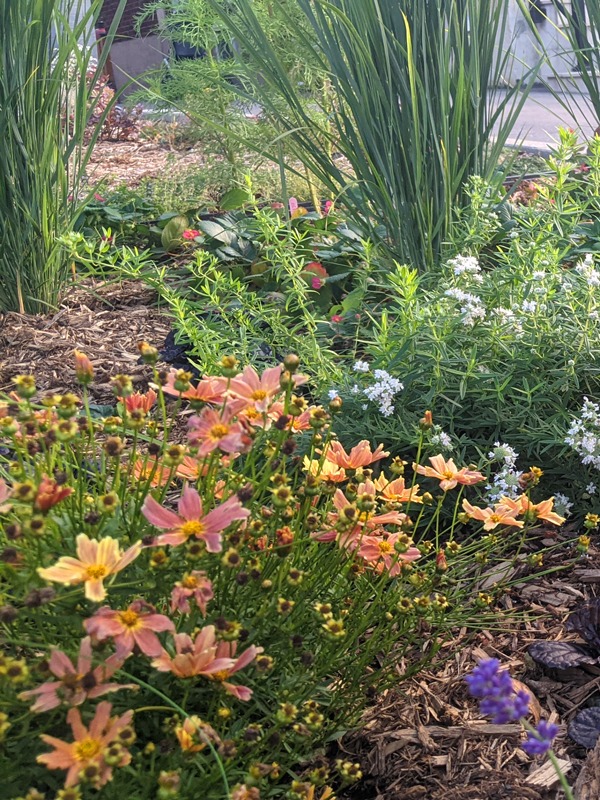
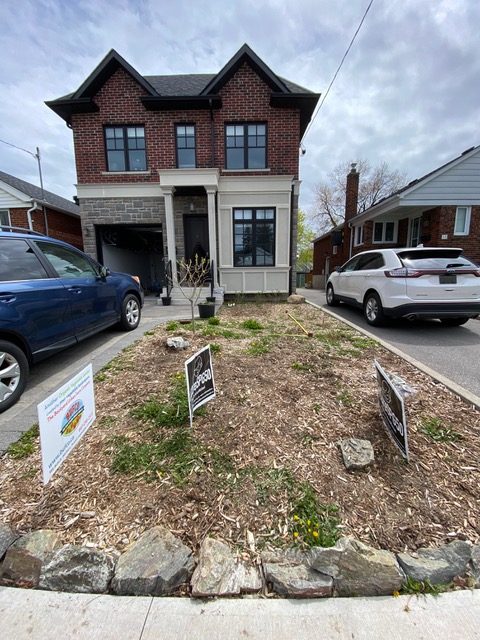
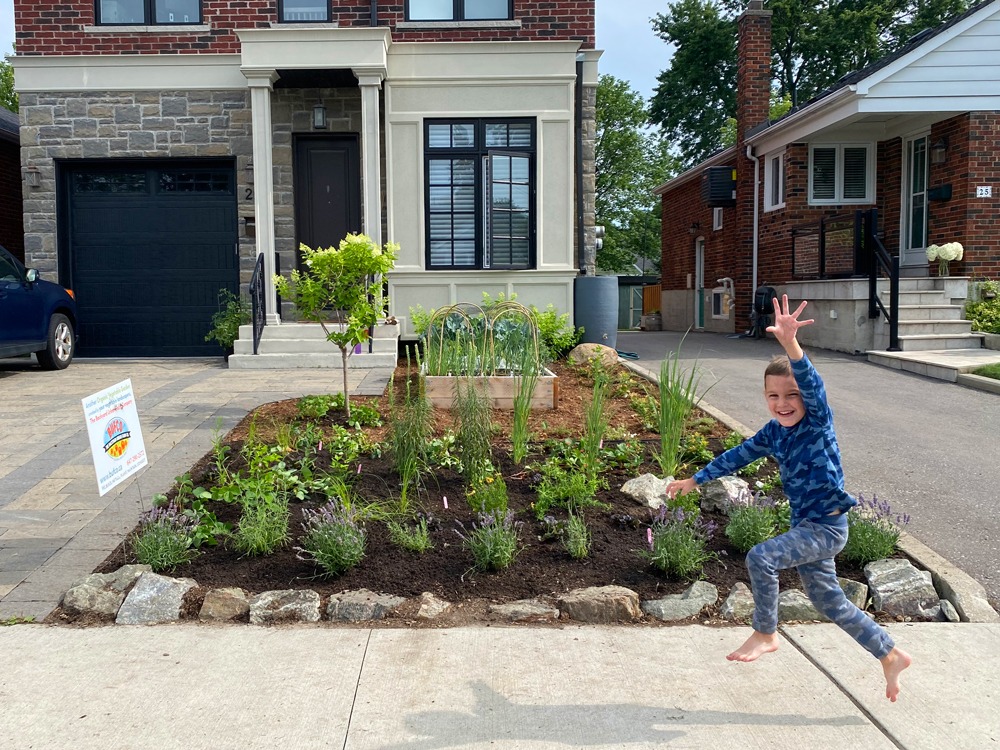
Iain and Debbie
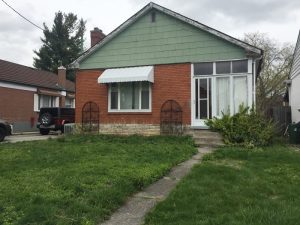
Iain and Debbie are a vibrant couple , who wanted more from their yard than just grass. They had shared their property with Iain’s father, but were becoming increasingly ready to transform the space since Dad’s passing a few years ago.
They came to us with a few specific ideas, but needed someone to put it all together for them in a cohesive and fully visioned plan. For one, a large bush in the yard made up half of a hate-hate relationship (a pruning episode gone wrong literally sent Iain to the emergency room!) And they were bored with the monotony of an all grass expanse. Additionally, they weren’t keen on Iain’s father’s rose bushes yet wanted to make sure that Dad’s legacy wasn’t completely removed.
During our initial site visit, Arlene noticed an assortment of canoes in various states of disrepair in the backyard. When she learned that the canoes belonged to Iain’s father, she was immediately reminded of Aidan Dahlin Nolan’s brilliant Home Grown National Park project and was inspired to spotlight one of the canoes in the front yard. We designed a landscape where the canoe looks as though it were flowing through a river edged by native grasses, and used the canoe itself as a raised bed overflowing with colourful native pollinator gardens. The landscape was not only vibrant (for both humans and pollinators alike), but it expressed Iain and Debbie’s fun personality and commemorated Iain’s late father. Iain loved the idea so much that, when we realized the canoe was beyond repair even to be repurposed as a raised bed, he bought a used canoe from Kijiji!
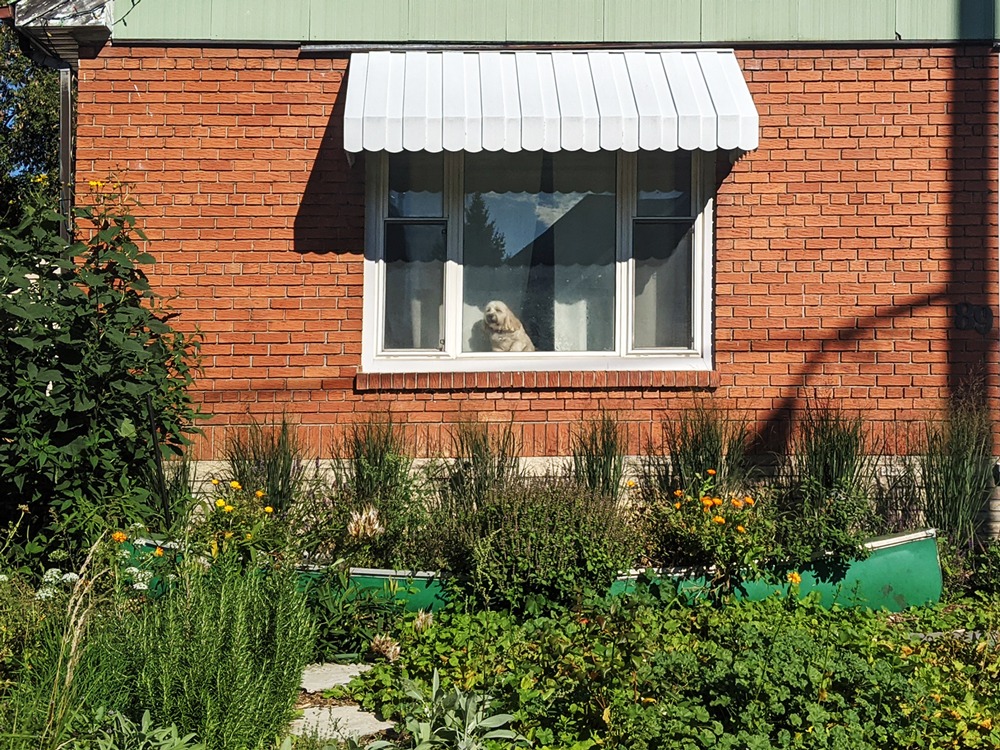
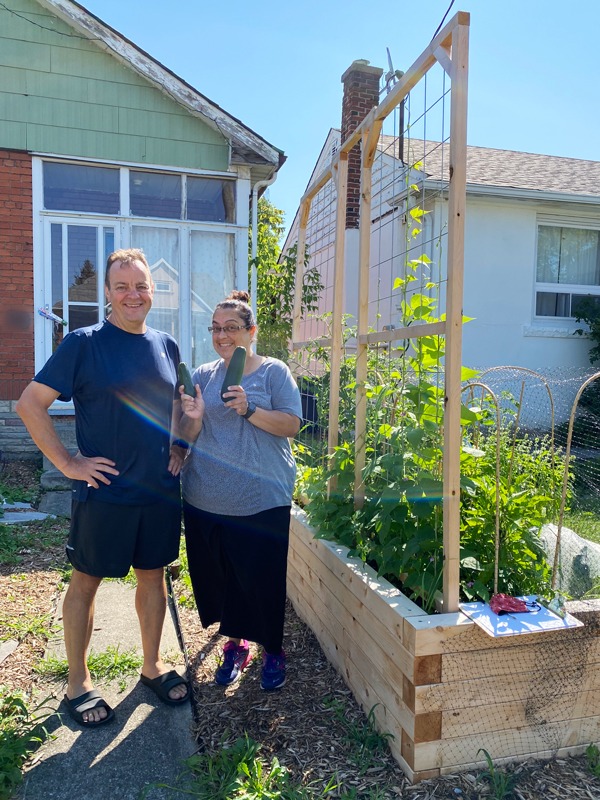
In addition to the canoe as a focal point, the garden features an herb and berry patch as well as a raised vegetable bed. Despite never having grown vegetables before, Iain and Debbie were bold enough to experiment in full view of all their neighbours in their front yard. They loved the idea of striking casual conversation while leaning on a raised bed, and what better reason to be in the front yard than tending to your vegetables, herbs and fruits. It’s been truly inspiring to help Iain and Debbie transform aspects of their daily lives and help them realize a vision of a self-sustaining new world that can be shared with their community.
A Note About Maintenance
Swapping a lawn for a perennial garden of herbaceous plants is swapping one kind of maintenance for another. While you will no longer need to mow the lawn, the garden will require maintenance, especially during the first few years of installing it. Until plants grow to their mature size and groundcover plants cover the soil completely, “weeds” will grow opportunistically in the vacant spaces that were left behind when the sod was removed. Plants will need consistent watering while the roots are establishing. For each of the aforementioned clients, we’ve also considered the upkeep of their gardens. We developed a maintenance plan for Sanj and Mekalai, we do periodic consultations with Iain and Debbie, and our gardeners check in on Stuart and Stephanie’s front yard garden during their existing bi-weekly vegetable garden visits.
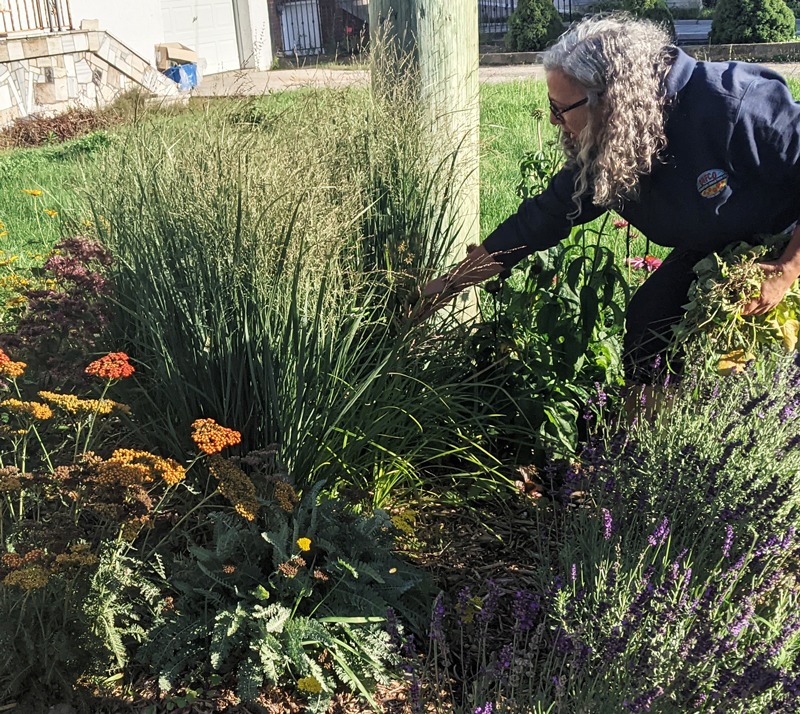
Don’t get us wrong, there is a time and a place for lawns: lawns make great canvases for gathering outdoors, for one, and great play spaces for children and pets. There are also a variety of low-growing hardy plants that can be used as lawn alternatives both aesthetically and functionally, depending on the range of activities you design for the lawn. And that’s exactly it: The more lawns we transform, the more we challenge the norm, the more we demonstrate the potential that non-lawns have to offer–for community, family, beauty, biodiversity, and food–the more people will have to consider lawns intentionally.
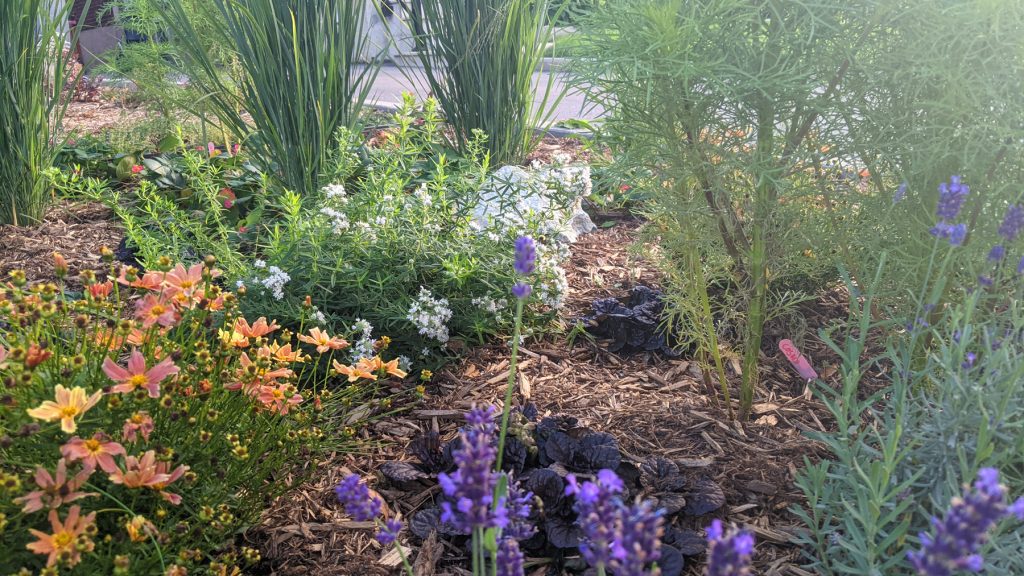
Posted in
Tags
Comment
Comments are closed.
I appreciate the informative article and expertise. keep up the great work!